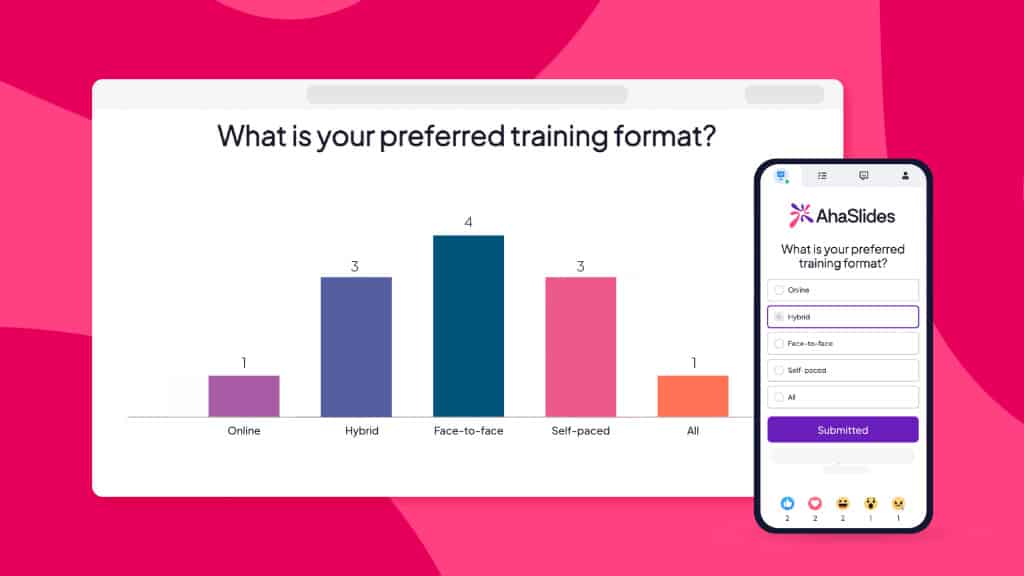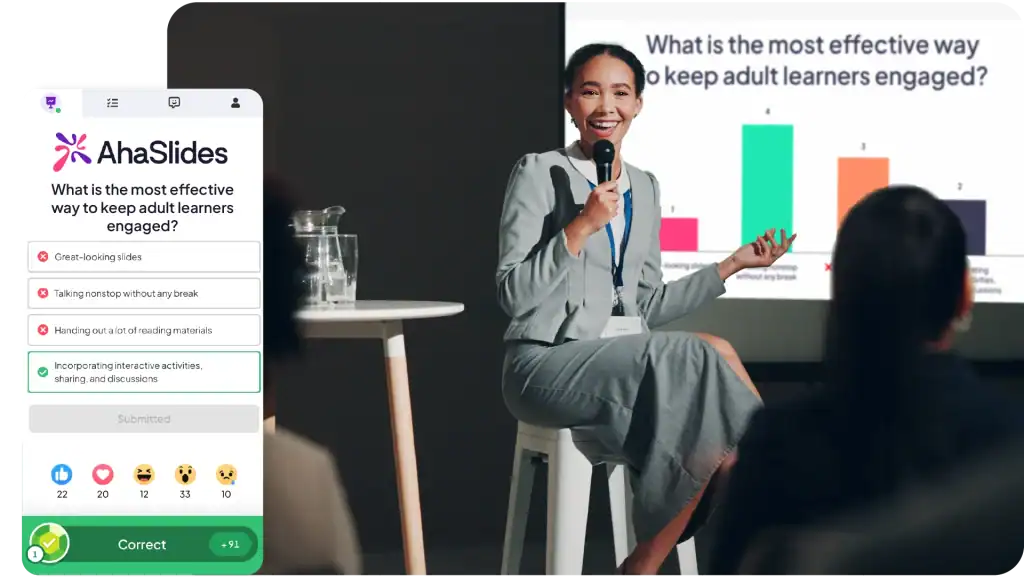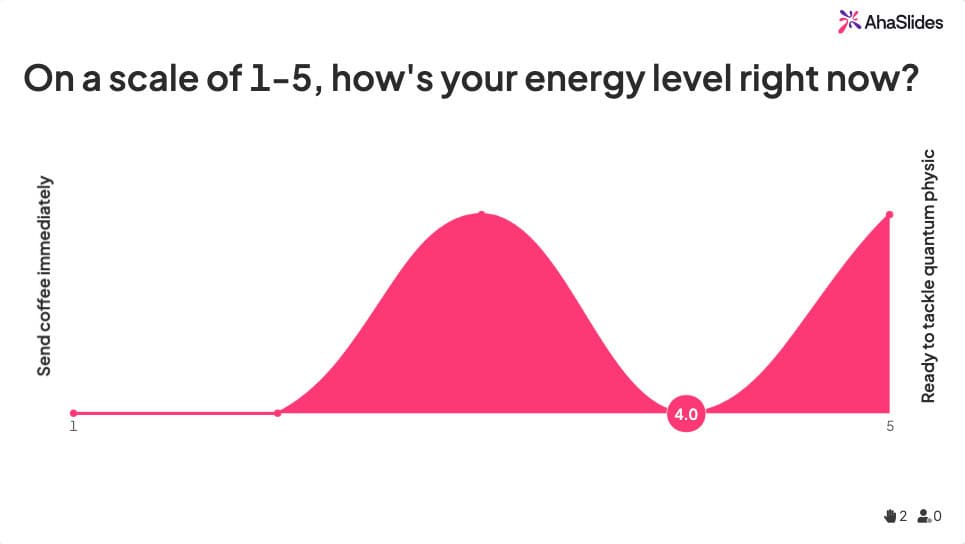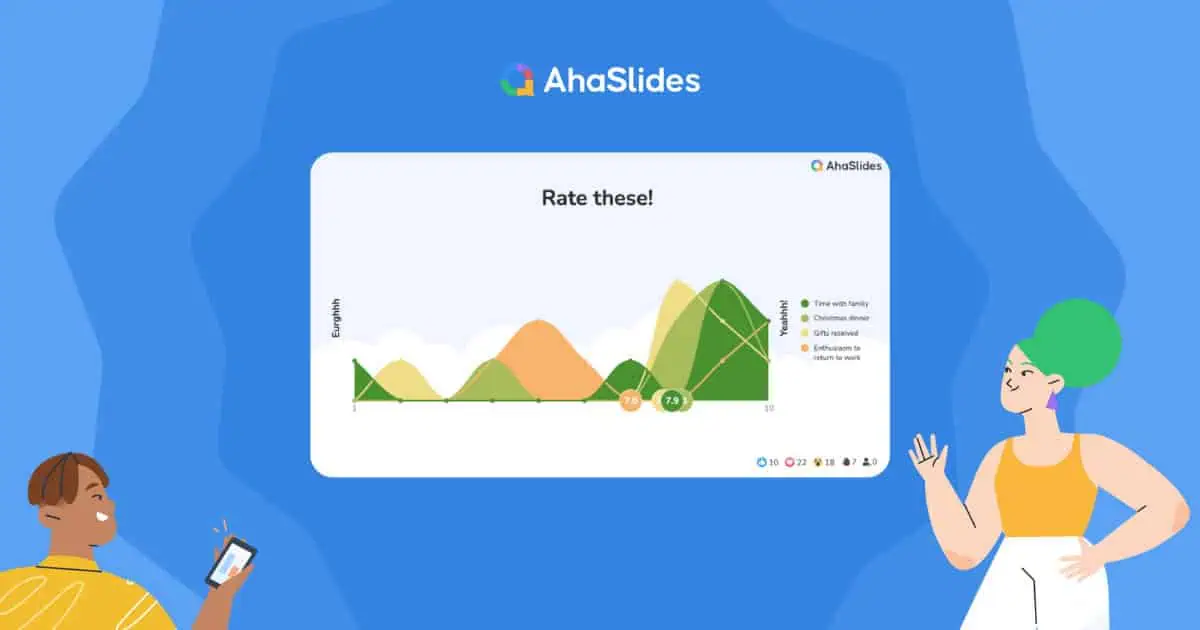Amin'izao toe-karena miofana amin'ny TikTok izao, manana 8 segondra eo ho eo ianao hisamborana ny fahalianan'ny olona iray — fotoana kely kokoa noho ny trondro volamena. Raha toa mampatahotra izany mandritra ny famelabelarana maharitra 5 minitra, ity ny vaovao tsara: ny famelabelarana fohy no fitaovam-piadiana miafinao.
Raha ny hafa kosa mandehandeha eny amin'ny 60-slide deck mijery maso manjelanjelatra, ianao dia handefa hafatra mifantoka izay miraikitra. Na manangana mpampiasa vola ianao, na manofana ekipa lavitra, manolotra ny valin'ny fikarohana, na manao dinidinika momba ny anjara nofinofinao, ny fifehezana ny endrika 5 minitra dia tsy mety fotsiny fa mamaritra ny asa.
Ity toro-lalana ity dia misarika ny siansa famelabelarana, hevitra avy amin'ireo mpampiofana matihanina izay manolotra fivoriana an-jatony isan-taona, ary teknika voaporofo avy amin'ireo mpandahateny TED hanampy anao hamorona famelabelarana izay mahasarika, mandresy lahatra ary mamela fiantraikany maharitra.
Fizahan-takelaka
Nahoana ny famelabelarana 5 minitra no mitaky fomba fiasa hafa
Research avy amin'i John Medina, neuroscientist, dia mampiseho fa mihena be ny sain'ny mpihaino isaky ny 10 minitra mandritra ny famelabelarana mahazatra. Amin'ny toe-javatra virtoaly dia mihena ho 4 minitra fotsiny io varavarankely io. Ny famelabelaranao 5 minitra dia mipetraka tsara ao anatin'ity toerana mahafinaritra fifampiraharahana ity—fa raha mamolavola azy tsara ianao.
Avo kokoa ny tsatòka miaraka amin'ny famelabelarana fohy. Ny teny rehetra dia misy dikany. Ny slide tsirairay dia manan-danja. Tsy misy fotoana ho an'ny famenoana, tsy misy toerana ho an'ny tangents, ary tsy misy fandeferana amin'ny fumbles ara-teknika. Ny fikarohana momba ny indostria dia mampiseho fa ny 67% amin'ny matihanina ankehitriny dia maniry ny famelabelarana fohy sy mifantoka amin'ny famelabelarana lava — kanefa ny ankamaroan'ny mpanolotra dia mbola manao lahateny fohy toy ny dikan-teny fohy amin'ny lava, izay mahalana.
Ahoana ny fomba fanaovana famelabelarana 5 minitra
Dingana 1: Safidio ny lohahevitrao miaraka amin'ny Surgical Precision

Ny fahadisoana lehibe indrindra ataon'ny mpanolotra? Miezaka manarona tany be loatra. Tokony hiresaka momba ny famelabelaranao 5 minitra hevitra fototra iray- tsy telo, na roa. Hevero ho toy ny laser izy io, fa tsy jiro.
Ny lohahevitrao dia tsy maintsy mandalo ity fitsapana fizarana efatra ity:
- Focal point tokana: Afaka manazava azy amin'ny fehezanteny iray ve ianao? Raha tsy izany, tery kely.
- Fifandraisana amin'ny mpihaino: Mamaha olana atrehin'izy ireo ve izany? Alefaso ny vaovao efa fantany.
- tsotra: Azonao hazavaina tsy misy foto-kevitra sarotra ve izany? Tehirizo lohahevitra be pitsiny ho an'ny endrika lava kokoa.
- Ny fahaizanao: Mifikitra amin'ny lohahevitra fantatrao lalina. Voafetra ny fotoana fiomanana.
Mba hahazoana aingam-panahy, diniho ireto lohahevitra 5 minitra voaporofo ireto amin'ny toe-javatra samihafa:
- Fikirana matihanina: Paikady 3 mifototra amin'ny angon-drakitra hampihenana ny fikorontanan'ny mpanjifa, Ahoana ny fomba namerenan'ny fitaovana AI ny fizotran'ny asantsika, Nahoana ny valin'ny Q3 dia manondro pivot stratejika
- Fiofanana & L&D: Fahazarana iray izay manova ny fahombiazan'ny ekipa lavitra, Ny psikolojia ao ambadiky ny naotin'ny mpiasa, ny fomba hanomezana valiny izay manatsara ny fitondran-tena.
- Contexte akademika: Fikarohana fototra avy amin'ny fikarohana maharitra nataoko, Ny fiantraikan'ny media sosialy amin'ny fanapahan-kevitry ny tanora, Ny etika amin'ny fanovana fototarazo amin'ny toe-javatra telo tena izy
Dingana 2: Mamolavola Slides Manamafy (Tsy manelingelina)
Ity misy fahamarinana iray manasaraka ny mpankafy amin'ny mpanolotra matihanina: ianao no famelabelarana fa tsy ny slide-nao. Tokony hanohana ny fitantaranao ny slides fa tsy hanolo azy.
Ny fanontaniana fanisana slide
Ny fikarohana avy amin'ireo manam-pahaizana momba ny famelabelarana dia manome soso-kevitra 5-7 ho an'ny lahateny maharitra 5 minitra - eo ho eo amin'ny slide iray isa-minitra miaraka amin'ny fotoana fanokafana sy famaranana. Na izany aza, ny mpandahateny TED indraindray dia mampiasa slide 20 izay mandroso haingana (10-15 segondra tsirairay avy) mba hitazonana ny firoboroboan'ny maso. Ny zava-dehibe kokoa noho ny habe dia ny mazava sy ny tanjona.
Fitsipika famolavolana votoaty
- Lahatsoratra kely indrindra: Teny 6 ambony indrindra isaky ny slide. Ny soratanao 700-teny dia tokony holazaina fa tsy aseho.
- Ambaratonga hita maso: Ampiasao ny habe, ny loko ary ny habaka fotsy hitarihana ny saina amin'izay zava-dehibe indrindra.
- Fijery angona: Ny antontan'isa na kisary iray mahasarika isaky ny slide dia mamely andalana fanazavana.
- Famolavolana mifanaraka: Ny endritsoratra, ny loko ary ny lamina mitovy dia mitazona ny maha matihanina.
Pro Soso-kevitra: Ataovy hifampiraharaha ny famelabelaranao amin'ny alàlan'ny fitsapan-kevitra mivantana, endri-javatra Q&A, na fanontaniana haingana. Manova ny mpijery mandeha ho mpandray anjara mavitrika izany ary manatsara ny fitazonana vaovao. Fitaovana toy ny AhaSlides mamela anao hampiditra ireo endri-javatra ireo tsy misy olana, na dia amin'ny endrika 5 minitra aza.

Dingana 3: Mifehy ny fotoana miaraka amin'ny fepetra miaramila
Ao anatin'ny famelabelarana maharitra 5 minitra dia manana asa ny segondra tsirairay. Tsy misy buffer ho an'ny rambling na famerenana amin'ny fahadisoana. Ireo mpandahateny matihanina dia manaraka ity rafitra voasedra ady ity:
Ny raikipohy fizarana fotoana voaporofo
- 0:00-0:30 - Fivoriana fanokafana: Sariho ny saina amin'ny zava-misy manaitra, fanontaniana mihantsy, na tantara mahasarika. Alefaso ny fampidiran-dresaka lava.
- 0:30-1:30 - Ny olana: Mametraha ny antony tokony hiahy ny mpihaino anao. Inona no fanamby resahin'ny lohahevitrao?
- 1:30-4:30 – Vahaolana/fahitanao: Ity no votoatinao fototra. Manomeza hevi-dehibe 2-3 miaraka amin'ny porofo manohana. Tapaho izay tsy ilaina.
- 4:30-5:00 - Famaranana sy antso ho amin'ny hetsika: Hamafiso ny hafatrao fototra ary lazao amin'ny mpanatrika izay tokony hatao manaraka.
Fanitsiana fampisehoana virtoaly
Fampisehoana lavitra? Amboary ny fotoana fifampiraharahana isaky ny 4 minitra (araka ny fikarohana nataon'i Medina). Mampiasà fitsapan-kevitra, mangataha valiny amin'ny chat, na mametraha fanontaniana retorika. Hamarino ny zoro fakan-tsary (haavan'ny maso), miantoka ny hazavana matanjaka avy eo aloha, ary andramo mialoha ny kalitaon'ny feo. Ny mpihaino virtoaly dia mora variana kokoa, noho izany dia tsy voatery ny fifandraisana - tena ilaina izany.

Dingana 4: Alefaso amin'ny fahatokisana tena izy

Na ny votoaty mamirapiratra aza dia mianjera miaraka amin'ny fanaterana ratsy. Toy izao ny fomba fiasan'ny matihanina amin'ny fotoanan'ny fahamarinana:
Miankina amin'izany ny fanazaran-tena toy ny asanao (satria mety izany)
Avereno atao in-5-7 farafahakeliny ny famelabelaranao mandritra ny 5 minitra. Mampiasà fameram-potoana. Raketo an-tsoratra ny tenanao ary jereo izany—mampahory nefa tena sarobidy. Manaova fanazaran-tena mandra-pahafahanao mamoaka ny atiny ho voajanahary tsy misy mamaky slide. Ny fahatsiarovana hozatra dia mitondra anao amin'ny tebiteby.
Teknika fanaterana izay mampisaraka ny mpankafy amin'ny matihanina
- Karazana feo: Hanova ny hafainganam-pandeha, ny haavony ary ny haavony. Miato kely mba hanantitrantitra — mahery ny fahanginana.
- Fiteny: Amin'ny maha-olona, mampiasa fihetsika misokatra ary mihetsika miaraka amin'ny tanjona. Eo amin'ny fakan-tsary, ferana ny fihetsehana (mihamatanjaka izy ireo) ary tohizo ny fifampikasihan-maso amin'ny family.
- fitantarana: Maneno amin'ny ohatra fohy sy manan-danja na anekdota. Ny tantara dia mampiakatra ny fitazonana 22x raha oharina amin'ny zava-misy fotsiny.
- Fitantanana angovo: Ampifanaraho amin'ny hafatrao ny herinao. Mafana fo amin'ny aingam-panahy, refesina amin'ny lohahevitra matotra.
- Fahavononana ara-teknika: Fitaovana fitsapana 30 minitra mialoha. Manana drafitra backup ho an'ny olana mifandray.
Ny tsiambaratelon'ny fifandraisan'ny mpihaino
Eritrereto ny famelabelaranao ho toy ny resaka fa tsy fampisehoana. Tazony ny maso (na jereo ny fakan-tsary ho an'ny famelabelarana virtoaly). Ekeo ny fanehoan-kevitra. Raha tafintohina ianao dia miato kely ary tohizo — mamela ny maha-azo itokiana ny mpihaino, fa tsy mamaky slides amin'ny fomba robot.
Soso-kevitra miafina: Tsy fantatrao raha misy fiantraikany ny famelabelaranao 5 minitra? Ampiasao a fitaovana fanehoan-kevitra mba hanangonana ny fihetseham-pon'ny mpihaino avy hatrany. Mitaky ezaka kely fotsiny izany, ary misoroka ny fahaverezan'ny valiny sarobidy ianao eny an-dalana.

Fahadisoana 5 mahazatra rehefa manao famelabelarana 5 minitra
Mandresy sy mampifanaraka amin'ny alàlan'ny fitsapana sy ny fahadisoana izahay, saingy mora kokoa ny misoroka ny fahadisoana rookie raha fantatrao hoe inona izy ireo👇
- Mihazakazaka amin'ny fotoana: Fampandrenesana ny mpihaino. Mampiseho fiomanana ratsy izany ary tsy manaja ny fandaharam-potoanany. Manaova fanazaran-tena hamita amin'ny 4:45.
- Slide be loatra: Mahatonga ny mpihaino hamaky teny fa tsy hihaino ny slides misy soratra. Very ny sainy avy hatrany ianao.
- Fanazaran-tena mandingana: "5 minitra monja" dia fisainana mampidi-doza. Ny endrika fohy dia mitaky fanazaran-tena bebe kokoa, fa tsy latsaky.
- Miezaka manarona ny zava-drehetra: Ny halalin'ny halalin'ny sakany. Ny fahitana mazava iray izay manakoako dia tsara kokoa noho ny teboka dimy tsy misy tadidy.
- Tsy miraharaha ny mpihaino anao: Ampifanaraho amin'ny zavatra mahaliana azy, ny haavon'ny fahalalana ary ny filany. Tsy tonga mihitsy ny famelabelarana ankapobeny.
Ohatra famelabelarana 5 minitra
Halalino ireto ohatra ireto mba hahitana ireo fitsipika miasa:
William Kamkwamba: 'Ahoana no nampiasako ny rivotra'
izany TED Talk video dia manolotra ny tantaran'i William Kamkwamba, mpamorona iray avy any Malawi izay, tamin'ny mbola kely niainan'ny fahantrana, dia nanamboatra kodiaran-drivotra hanondrahana rano sy hamokarana herinaratra ho an'ny tanànany. Nahasarika ny mpihaino ny fitantarana voajanahary sy mahitsy nataon'i Kamkwamba, ary teknika lehibe iray hafa koa ny fampiatoana fiatoana fohy mba hihomehezan'ny olona.
Susan V. Fisk: 'Ny maha-zava-dehibe ny maha-concise'
izany fampiofanana video manolotra torohevitra mahasoa ho an'ny mpahay siansa mba handrafetana ny lahateniny hifanaraka amin'ny endrika famelabelarana “5 Minute Rapid”, izay hazavaina ao anatin'ny 5 minitra ihany koa. Raha mikasa ny hamorona famelabelarana haingana "Ahoana ny fomba" ianao dia jereo ity ohatra ity.
Jonathan Bell: 'Ahoana no hamoronana anarana marika lehibe'
Araka ny soso-kevitry ny lohateny, ny mpandahateny Jonathan Bell dia hanome anao a dingana-by-dingana mpitari-dalana momba ny fomba hamoronana anarana marika maharitra. Mivantana amin'ny lohaheviny izy ary avy eo dia mizara izany ho singa kely kokoa. Ohatra tsara ianarana.
Faktiora PACE: '5 Min Pitch at Startupbootcamp'
Ity video ity dia mampiseho ny fomba PACE faktiora, fanombohana manokana amin'ny fanodinana vola amin'ny vola maro, dia afaka nametraka ny heviny tamin'ny mpampiasa vola mazava sy mazava.
Will Stephen: 'Ahoana ny fomba fampihetseham-peo amin'ny resaka TEDx'
Mampiasa fomba mahatsikaiky sy mamorona, Will Stephen's TEDx Talk mitarika ny olona amin'ny alalan'ny fahaizana ankapobeny amin'ny fitenenana ampahibemaso. Tsy maintsy jerena mba hahatonga ny famelabelaranao ho sangan'asa.
Vonona ny hamorona famelabelarana izay tena mahasarika tokoa? Atombohy amin'ny fitaovana famelabelarana interactive AhaSlides ary ovay ny famelabelaranao 5 minitra manaraka avy amin'ny tsy hay hadinoina ho tsy hay hadinoina.








